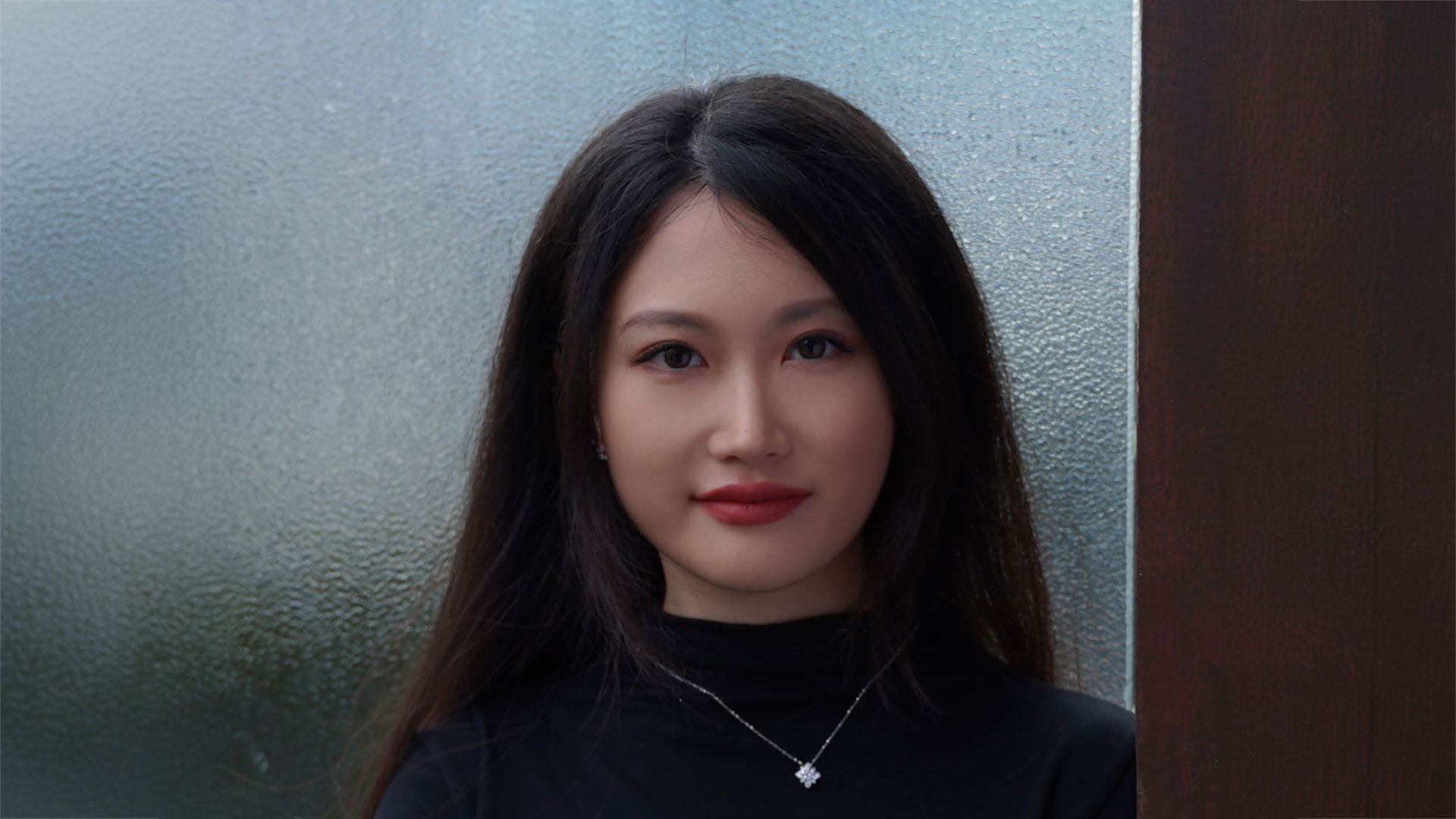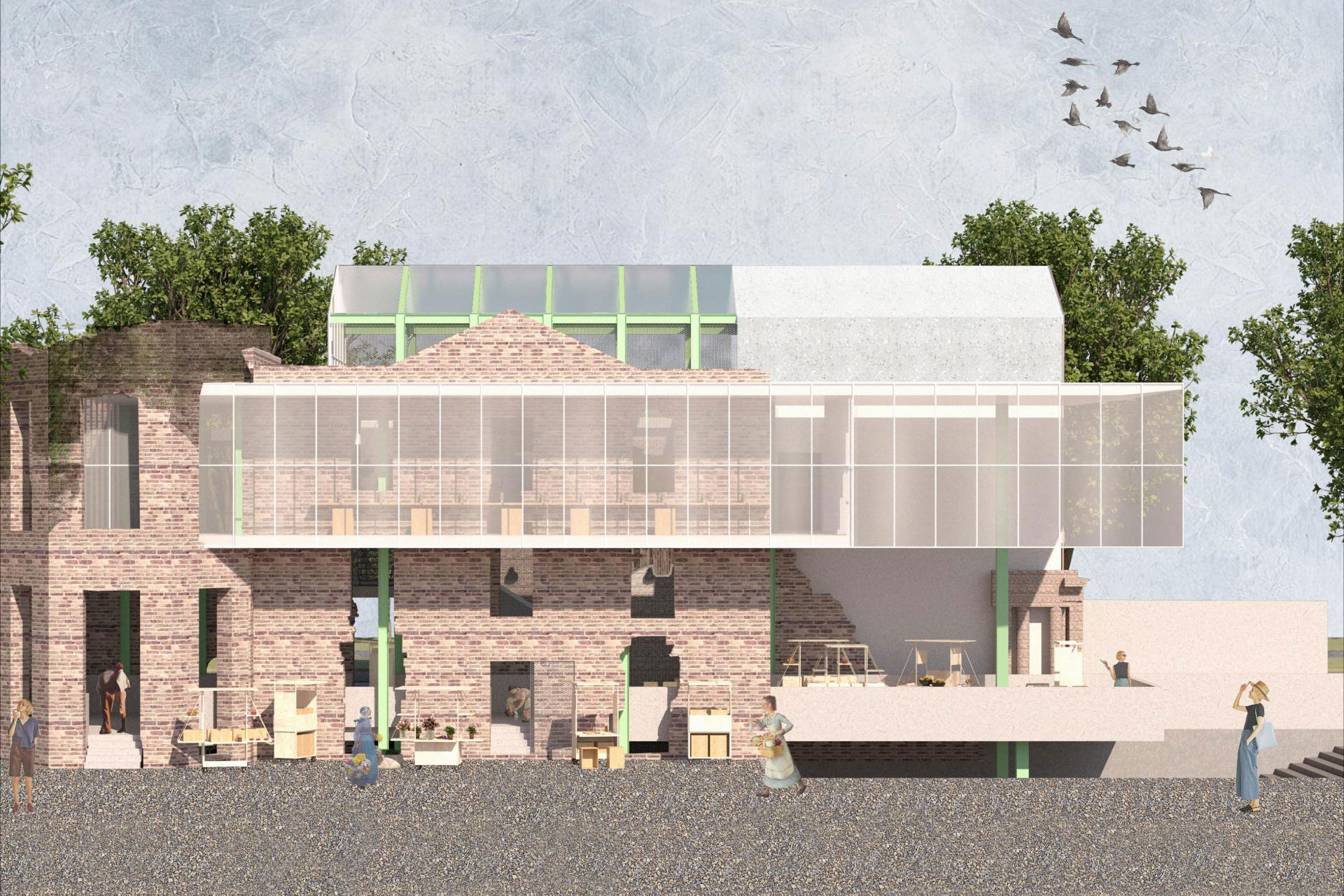1Please give us a brief bio of yourself and your design background.
I'm Naixin Shi, a London-based artist and interior designer dedicated to revitalizing neglected spaces through the innovative use of reclaimed materials. With an architectural background and a degree from the Royal College of Art, I specialize in restoration and upcycling. As the founder of Studio N (now known as Patch Design), I champion sustainable design by employing recycled materials to create environmentally transformative spaces.
2What made you become/why did you choose to become a designer/artist?
I have a deep passion for creation, particularly in transforming objects and spaces. I believe that everything has its own vitality, and witnessing neglected spaces and discarded items come to life through my interventions brings me unparalleled satisfaction. The ability to transform the seemingly useless into something functional and vibrant is what drives my work in art and design. This process of creation and change is the core reason why I pursued a career in this field.
3Tell us more about your business/company, job profile, and what you do.
My design studio, originally named Studio N then rebranded as Patch Design in 2024, was founded in 2022. We specialize in the renovation of old buildings and the design of sustainable home products. The concept of recycling and repurposing permeates our entire business.
As an eco-conscious design brand, we emphasize preserving existing structures and adapting them to meet modern needs in our space designs. In our product designs, we use recycled plastic to create furniture. Our commitment to sustainability drives us to protect the environment through eco-friendly design practices.
4What does “design” mean to you?
To me, design is about bringing ideas to life and giving spaces and objects a new lifecycle. It involves reimagining architectural elements, ensuring that each project transcends the act of construction itself. Design is the process of transforming concepts into tangible realities, breathing new life and purpose into the built environment.
5What’s your favorite kind of design and why?
My favorite kind of design is exemplified by architect David Chipperfield. He emphasizes the importance of the environment in his work, believing that architects should guard, protect, and cherish our existing world, a philosophy I deeply admire. His respect for old buildings and his thoughtful consideration of the lasting impact of architecture on the environment and history are particularly inspiring to me.
Chipperfield's approach involves embracing what exists and designing in dialogue with time and place, updating the local architectural language of each site. One of my favorite examples of his work is the James Simon Gallery.
6To you, what makes a “good” design?
To me, a "good" design brings positive impacts to both people and the environment. A good design creates spaces where people feel comfortable and where the environment is respected. It should convey purity and order, embodying simplicity without being simplistic, and revealing thoughtful and meticulous logic in every detail.
7Describe your design style and its main characteristics.
My design style revolves around the preservation and repurposing of existing spaces and objects, with a focus on renovating old buildings. Rather than constructing entirely new structures, I prefer to celebrate and utilize what already exists.
Through deliberate and meaningful interventions, I aim to strike a balance between preservation and innovation—removing elements while preserving others. This approach fosters dynamic urban renewal through subtle updates that maintain the historical essence of a place while adapting it to contemporary needs.
8Tell us about your design process.
When it comes to space renovation, my design process begins with the site itself. I observe its existing elements, every brick and trace of time, paying close attention to the building's history. Next, I consider the surrounding environment and context, reflecting on the relationship between the building and its surroundings. Finally, I think about how the future functionality will adapt to this space, ensuring a harmonious integration of the past, present, and future.
9Do you think your country and its cultural heritage has an impact on your design process?
Yes, my experiences living in China, Australia, and the UK have significantly influenced my design style and process. These diverse cultural backgrounds make me more attentive to the history of a site, and I tend to selectively preserve the historical traces of buildings.
I have a deep respect for protecting the natural environment, which drives me to commit to sustainable design. I aim to balance preservation with dynamic urban evolution, using distinctive and memorable methods to protect and highlight the existing elements while allowing for progress and change.
10Congratulations! As the winner of the 2024 MUSE Design Awards, what does it mean to you and your company and team to receive this award distinction?
I am truly honored to receive the MUSE Silver Award. This recognition is a significant validation of my design work and a tremendous encouragement for me and my team. It inspires us to continue pursuing and implementing projects that align with our vision and values.
11Can you explain a bit about the winning work you entered into the 2024 MUSE Design Awards, and why you chose to enter this project?
The winning project for the 2024 MUSE Design Awards is a conceptual transformation of the century-old ruins of Nettleham House into a vibrant community market. This project revitalizes an abandoned space, turning it into a bustling social hub serving commercial and communal purposes.
By preserving historical elements and integrating new, lighter structures, the design fosters a stronger sense of community and enhances connections among residents. This project exemplifies the harmonious blend of historical preservation and modern adaptation, breathing new life into a forgotten piece of history and showcasing resilience, innovation, and community spirit.
12What was the biggest challenge with this project?
The biggest challenge with this project was navigating the higher costs and greater complexities associated with renovating historical structures compared to new construction. Finding clients willing to support such endeavors can also be difficult. However, I believe that by being persistent in these projects, we can create more opportunities to successfully realize renovations of old buildings in the future a possibility.
13How has winning an Award developed your practice/career?
Winning awards has significantly elevated my practice and career by increasing the visibility of my designs and spreading my design philosophy to a wider audience. It has opened doors to new opportunities and collaborations, allowing me to further promote sustainable design principles on a larger scale. This recognition not only validates my approach but also inspires me to continue innovating and pushing boundaries in the field of design.
14What are your top three (3) favorite things about our industry?
1. Creativity: I love how design allows us to genuinely transform a place. Architecture gives the feeling of altering history, as buildings become a part of the historical narrative.
2. Dynamism: Constantly engaging with new sites and conceptualizing fresh designs keeps us energized and inspired.
3. Enhanced Logical Thinking: Architectural design enhances our ability to think critically and solve problems effectively, fostering stronger analytical skills.
15What makes your country specifically, unique in the design industry?
My country boasts a rich architectural history that provides a unique foundation in the modern design industry. Despite advancements in contemporary design practices, there remains a wealth of heritage and tradition to draw inspiration from. This blend of historical legacy and innovative approaches contributes to a distinctive perspective that enriches our contributions to the global design landscape.
16Where do you see the evolution of design industry going over the next 5-10 years?
I foresee significant growth in sustainable design over the next 5-10 years, which aligns closely with my passion and focus. Designs centered around environmental and historical preservation will have a profound and lasting impact. As awareness and urgency regarding sustainability continue to rise globally, the design industry will increasingly prioritize solutions that not only enhance functionality and aesthetics but also minimize environmental impact and honor cultural heritage.
17If you were a student entering this industry or an aspiring MUSE Design Awards submitter, what advice would you give them?
This is an excellent opportunity to test your design abilities or strive toward a goal. Embrace it as a chance to showcase your creativity and dedication to innovative design practices.
18What resources would you recommend to someone who wants to improve their skills in the design industry?
I recommend attending design and art exhibitions, especially events like Milan Design Week, London Design Festival, Venice Architecture Biennale, and others. These exhibitions are rich sources of inspiration that can stimulate creativity and expand your design perspective.
19Tell us something you have never told anyone else.
I plan to expand our design brand to make our eco-friendly home furnishings widely embraced and used. Currently, we're launching a line of chairs and lamps made from recycled plastic, with a series made from ocean plastic waste also set to launch soon. Our studio's new name, Patch Design, reflects our belief that our efforts are akin to patching up the environment after damages occurred.
20Who has inspired you in your life and why?
Many people have inspired me throughout my life, but one person who stands out is Shuhei Aoyama, my former boss at B.L.U.E Architecture Studio. He dedicated himself to revitalizing old Beijing hutongs, respecting their original layouts and preserving their unique qualities while adapting parts of them to suit modern aesthetics and lifestyles, especially appealing to younger generations. I deeply resonate with this approach to urban renewal and have drawn significant inspiration from it.
21What is your key to success? Any parting words of wisdom?
The key to my success lies in dedication, creativity, and a steadfast commitment to my principles. I believe in continually learning and evolving, embracing challenges as opportunities for growth. Persistence and passion are essential—never underestimate the power of perseverance in achieving your goals.




